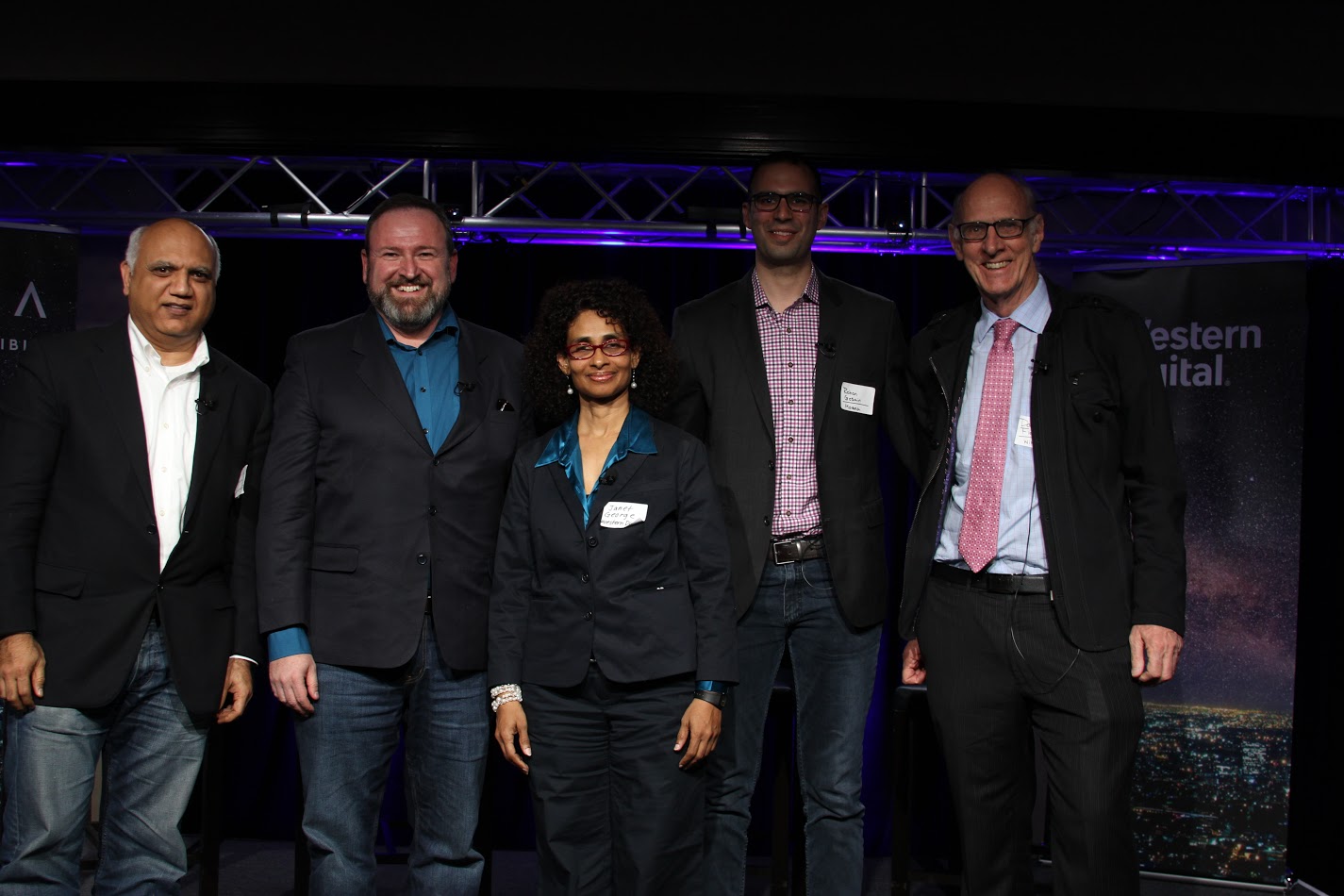 BIG DATA
BIG DATA
 BIG DATA
BIG DATA
 BIG DATA
BIG DATA
The cloud is a stepping to stone to the Industrial Internet of Things. This is vital, because sensors and cloud computing can offer an instant response at the point of interaction; closing the sale, fixing a machine before it breaks or smoothing out a process to run more efficiently.
However, not even the cloud’s power can handle the tidal wave of data that’s due to burst forth from billions of smart devices in the very near future.
The problem is one of transmission. Data has weight, like water, and moving it from sensor to the cloud is both slow and expensive. Add in the fact that most collected data is just noise, and businesses are shipping oceans across the world to sift out a few flakes of gold. It makes no sense.
Efficient processing demands that data must be processed at the edge, the point of collection. Businesses must shift their perspective from their own walls to the far edge of data collection.
At the Western Digital “Taking the Cloud to the Edge With Fog Computing” event in San Jose, CA, a panel of experts came together to discuss the challenges of this shift, both technical and social. The panel was moderated by David Floyer, lead analyst and chief technology officer at Wikibon Research.
The first challenge in moving a company toward the digital future is convincing the people to change the way their work happens. Therefore, the first question of the panel was, “How do you solve the people problem?”
The discussion started with Janet George, fellow and chief data officer at WD, a Western Digital Company. She replied that the goal was to make connections from where you’re moving to from where you’re at. A business has to be positioned from the perspective of infrastructure and use case and be ready to scale rapidly.
“Change happens because you’ve shown value, and to catch that value, people are quick to adapt,” she said.
Rohan Gosain, senior product marketing manager at Maana Inc. followed up, saying that although his company focused heavily on operationalizing the output of its data systems, users weren’t willing to change until they could see the value of that output. Transparency in these systems was also very important.
“If the client can see how the system came to a conclusion, they are a lot happier,” he said.
Summing up this experience, Val Bercovici, chief technology officer of SolidFire Inc., said, “The number one thing you can do for people is motivate and incentivize them.”
Beyond the people problem, there is also the technical hurdle. Every company is different, both in needs and process. How do you architect a solution for turning a company into a data-driven business?
The first panelist to answer was Sanjeev Kumar, vice president of engineering at FogHorn Systems Inc. He explained they had a number of customers going through the phases of adopting his company’s products. It starts with gathering data and playing it back to build trust that the product works like it’s supposed to.
From there, they move to prescriptive work, creating a machine learning model. Then, they install that model as close to the data as possible. “That’s how people build confidence in adopting something new,” he said.
Janet George revealed another challenge in dealing with data. “You cannot structure your data for one particular model,” she said. That data has to work with different models depending on the job it’s meant to do. Because of this, architecting a system is very difficult.
Gosain agreed with the play between models and data. “We believe any question can be answered by a series of models,” he said. It shouldn’t matter what the data source is, any model should be able to plug into any data source.
Watch the complete video interview below, and be sure to check out more of SiliconANGLE’s and theCUBE’s coverage of Western Digital’s “Taking the Cloud to the Edge with Fog Computing” event. (*Disclosure: Western Digital is a sponsor of segments on SiliconANGLE Media’s theCUBE. Neither Western Digital nor other sponsors have editorial control over content on theCUBE or SiliconANGLE.)
THANK YOU